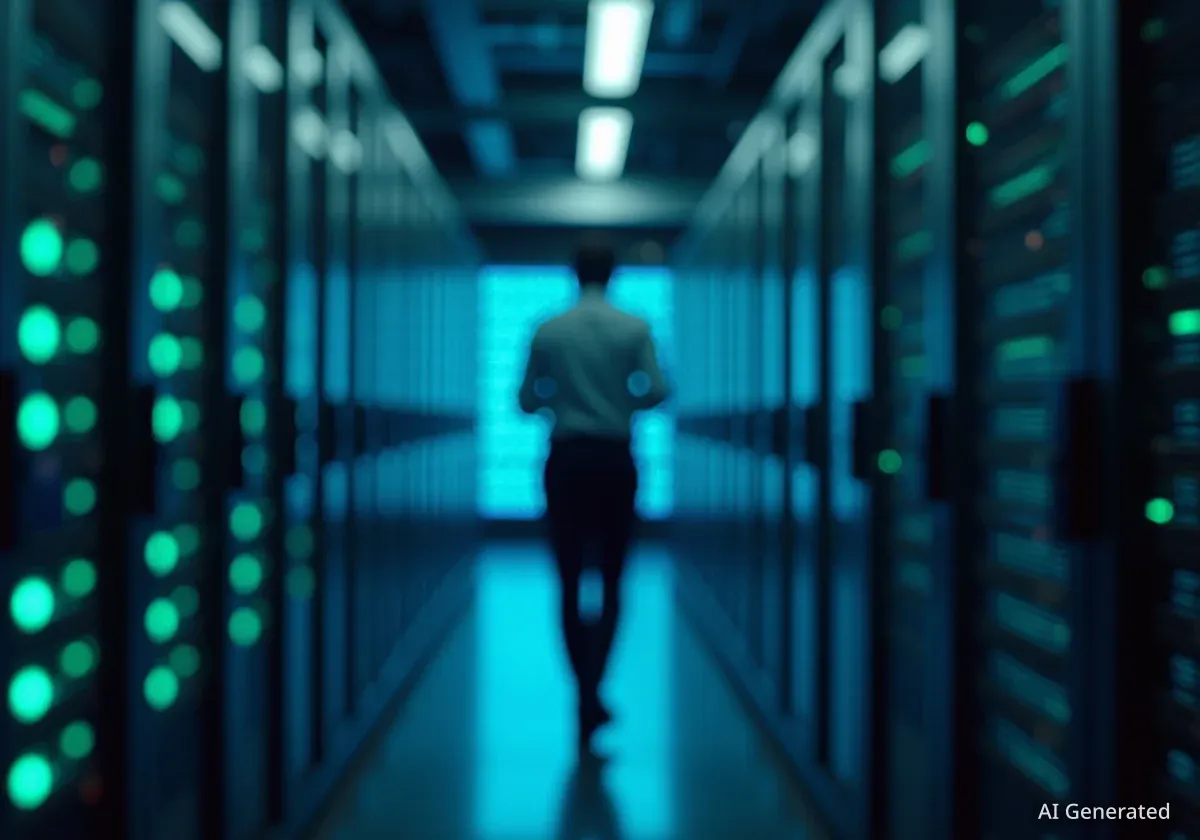OpenAI, the company behind ChatGPT, is pioneering an unconventional financial strategy to pay for the immense computing power required for its artificial intelligence development. The company is engaging in a series of complex, circular deals where billions of dollars in investments are often funneled back to the same corporate partners for services and infrastructure.
This approach, involving tech giants like Microsoft and Oracle, has enabled OpenAI to secure the resources needed for its ambitious projects. However, it also raises questions about the financial stability of this model and its potential impact on the broader tech economy.
Key Takeaways
- OpenAI uses a circular funding model, receiving investments and then paying the same investors for cloud computing and data center services.
- Microsoft has invested over $13 billion, with most of it returning to Microsoft for cloud services.
- Deals with companies like CoreWeave and Oracle involve tens and even hundreds of billions of dollars for computing power and data center construction.
- Chipmakers like Nvidia and AMD are also involved, with Nvidia investing $100 billion while OpenAI buys its chips.
- This strategy fuels rapid growth but creates significant financial risk, tying the fate of its partners to OpenAI's success in a speculative market.
The Microsoft Blueprint for AI Funding
The foundation of OpenAI's unique financial structure is its relationship with Microsoft. From 2019 through 2023, Microsoft became the primary investor in the AI startup, committing more than $13 billion to the company.
In a highly unusual arrangement, a significant portion of this capital did not remain with OpenAI. Instead, it was routed directly back to Microsoft as payment for the vast cloud computing resources needed to train and operate advanced AI models like GPT-4.
This symbiotic loop allowed OpenAI to access world-class infrastructure without massive upfront cash outlays, while Microsoft secured a leading position in the burgeoning AI market. It established a model that OpenAI would later replicate with other partners as its needs for computing power grew beyond what any single provider could offer.
The Insatiable Demand for Computing
Developing large-scale AI models is one of the most computationally expensive tasks in modern technology. It requires thousands of specialized computer chips running simultaneously for weeks or months, consuming enormous amounts of electricity. This demand for power is the primary driver behind OpenAI's multibillion-dollar financial arrangements.
Expanding the Circle of Partners
By mid-2023, OpenAI's demand for computing resources had outstripped even Microsoft's capacity. To continue its rapid pace of development, the company began to forge similar partnerships with a wider array of technology firms, from cloud providers to data center builders.
One of the most significant new partners is CoreWeave, a specialized AI data center company. OpenAI has signed agreements to pay CoreWeave over $22 billion for computing power. As part of these deals, OpenAI received $350 million in CoreWeave stock, creating a scenario where its payments could be partially offset by the increasing value of its partner.
Deals of Unprecedented Scale
The scale of these agreements is staggering. Oracle, a major software and cloud company, has reportedly agreed to spend $300 billion to construct new data centers specifically for OpenAI's use in Texas, New Mexico, Michigan, and Wisconsin. In turn, OpenAI is expected to pay Oracle a similar amount over several years to utilize these facilities.
This strategy extends globally. G42, a firm based in the United Arab Emirates with close government ties, is building a data center complex valued at approximately $20 billion for OpenAI in the UAE. This followed an investment round in October 2024 that included participation from the Emirates.
Global Data Center Push
OpenAI's infrastructure ambitions are not limited to one region. It is working with partners to build massive data centers across the United States and internationally, signaling a long-term strategy to control its own computing destiny rather than solely relying on cloud providers.
Involving the Chipmakers
The financial web also extends to the very companies that produce the essential hardware for AI. The specialized chips, or GPUs, are the engines of the AI revolution, and OpenAI has crafted deals to ensure its supply.
Nvidia, the dominant producer of AI chips, announced its intention to invest $100 billion in OpenAI over the next few years. This investment helps OpenAI finance its massive infrastructure projects, which in turn require the purchase of billions of dollars worth of Nvidia's chips.
A similar, though differently structured, deal was made with AMD, Nvidia's primary competitor. OpenAI secured an agreement allowing it to purchase up to 160 million shares of AMD stock for just a penny per share. This amounts to a potential 10% stake in the chipmaker, providing OpenAI with a valuable asset that could be used to fund future operations.
A High-Stakes Gamble on the Future
While OpenAI generates substantial revenue from its products like ChatGPT, the company is not yet profitable. Its entire financial structure is a bet on the future: that its AI technology will continue to advance and that its revenue will eventually outpace its enormous operational costs.
Sam Altman, OpenAI's chief executive, has openly stated that technological revolutions are driven by financial innovation as much as by technical breakthroughs. He views these complex deals as the necessary financial engineering to build a transformative technology.
"There is always a lot of focus on technological innovation. What really drives a lot of progress is when people also figure out how to innovate on the financial model," Altman recently said.
However, this strategy carries significant risks. If AI development slows or fails to meet commercial expectations, OpenAI and its partners could face enormous losses. Smaller firms like CoreWeave, which are taking on substantial debt to build data centers for OpenAI, could be particularly vulnerable.
Some agreements include safeguards. Both Nvidia and AMD have options to reduce their financial commitments if the AI market does not grow as anticipated. But for many involved, the success of OpenAI is now directly tied to their own financial stability, creating a high-stakes ecosystem where the fortunes of many companies are linked to a single, speculative technology.





